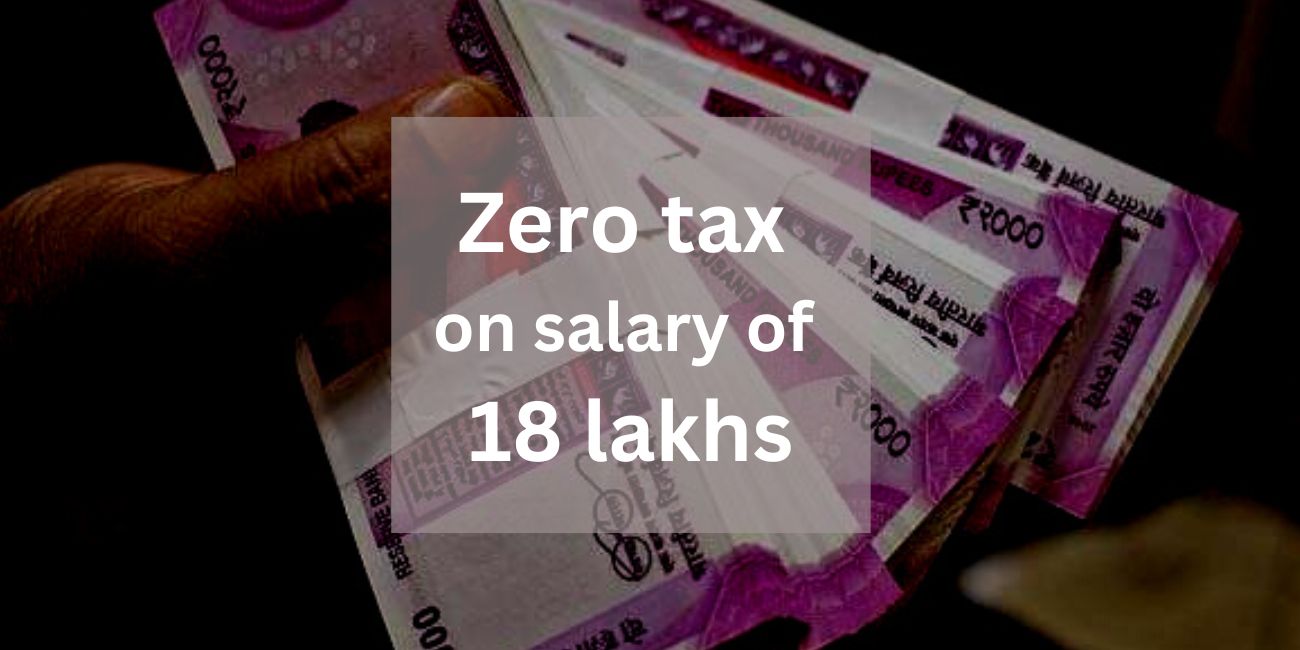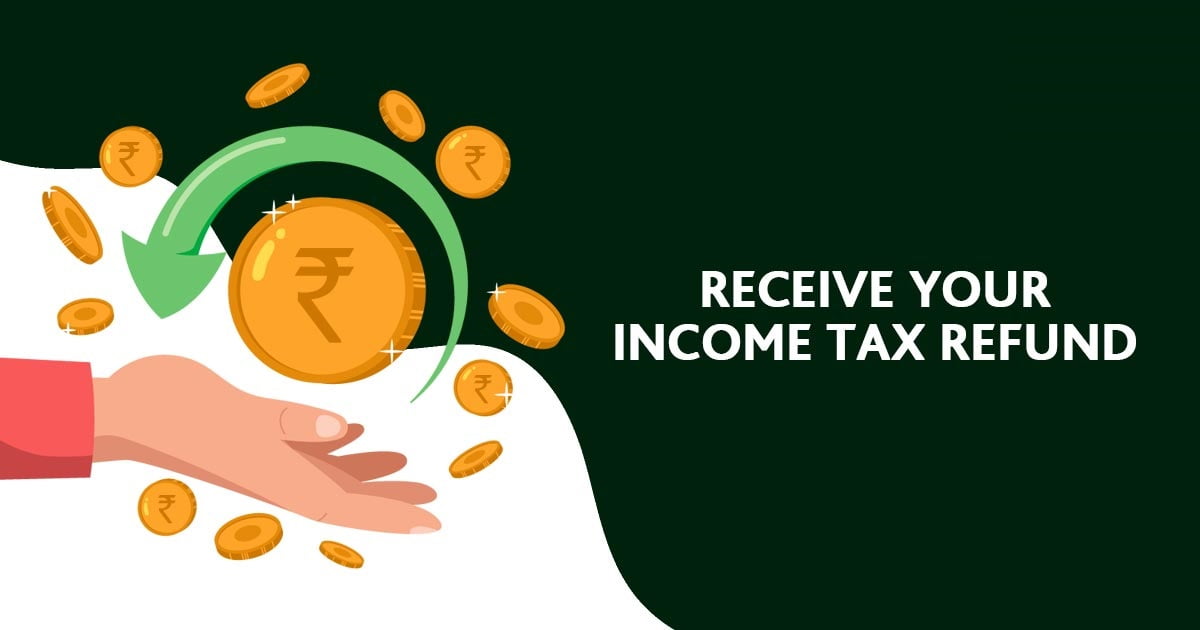Paying taxes is an unavoidable part of earning an income. But with the Tax knowledge and planning, you can lower your tax liability. In this article, we will take a look at How to Pay Zero tax on salary of 18 lakhs. We will be utilizing the various tax-exempted salary components and deductions available under the Indian tax laws. So, if you’re looking to keep more of your salary and pay zero tax, this article is a must-read!
The tax liability for a salary of Rs. 18 Lakhs in the financial year 2022-2023 would be calculated based on the tax slab mentioned above as follows.
- Rs. 0- Rs. 3 lakhs – 0 % (taxable income: 0)
- Rs. 3-Rs. 6 lakhs – 5% (taxable income: 3 Lakhs) Tax on (6 Lakhs – 3 Lakhs) = 3 Lakhs * 5% = Rs. 15,000
- Rs. 6-Rs. 9 lakhs -10% (taxable income: 6 Lakhs) Tax on (9 Lakhs – 6 Lakhs) = 3 Lakhs * 10% = Rs. 30,000
- Rs. 9-Rs. 12 lakhs- 15% (taxable income: 9 Lakhs) Tax on (12 Lakhs – 9 Lakhs) = 3 Lakhs * 15% = Rs. 45,000
- Rs. 12-Rs. 15 lakhs – 20% (taxable income: 12 Lakhs) Tax on (15 Lakhs – 12 Lakhs) = 3 Lakhs * 20% = Rs. 60,000
- Above Rs. 15 lakhs – 30% (taxable income: 18 Lakhs – 15 Lakhs = 3 Lakhs) Tax on (18 Lakhs – 15 Lakhs) = 3 Lakhs * 30% = Rs. 90,000
So, the total tax liability for a salary of Rs. 18 Lakhs in the financial year 2022-2023 would be Rs. 15,000 + Rs. 30,000 + Rs. 45,000 + Rs. 60,000 + Rs. 90,000 = Rs. 2,90,000.
In this Blog We will Try to Manage Taxes Such that Tax Liablity should Come down to Zero, in short How to Pay Zero tax on salary of 18 lakhs?
Lets start with Basic Suggestion on How to Pay Zero tax on salary of 18 lakhs
- Include tax-free components in your salary: Make sure to include components such as conveyance allowance and medical reimbursement in your salary, as they are exempt from tax.
- Avail House Rent Allowance (HRA) benefit: If you are paying rent, you can claim HRA exemption up to 50% of your basic salary (40% in non-metro cities).
- Reimbursement for car maintenance and driver salary: Your company can reimburse you up to Rs 1,800 per month for car maintenance (Rs 2,400 per month for larger cars) and Rs 900 per month for driver salary, tax-free.
- Invest in tax-saving instruments: Consider making contributions to Employee Provident Fund (EPF) and National Pension System (NPS) to reduce your taxable income.
- Use gift vouchers: Your company can give you a gift voucher worth Rs 5,000 per annum, tax-free.
- Avail tax benefits of company-owned cars: If your company provides you with a company-owned car, you can avail of tax benefits.
Let’s Create Example of Salary Structure to Pay Zero tax on salary of 18 lakhs
Here is an illustration of a tax-efficient salary structure based on an annual salary of Rs. 18 Lakh and the tax-free components mentioned above:
- Basic salary: To calculate the HRA exemption, the basic salary should be a significant component of the salary structure. Let’s assume a basic salary of Rs. 6 Lakh per annum.
- HRA: Based on the basic salary, the HRA exemption could be 40-50% of the basic salary, depending on the city of residence. Let’s assume an HRA of Rs. 2.4 Lakh per annum (40% of Rs. 6 Lakh).
- Car maintenance: This component is tax-free up to Rs. 30,000 per year, as mentioned.
- Food coupons: This component is tax-free up to Rs. 26,400 per year, as mentioned.
- LTA: This component is tax-free up to Rs. 30,000 per year, as mentioned.
- Newspaper allowance: This component is tax-free up to Rs. 12,000 per year, as mentioned.
- Uniform allowance: This component is tax-free up to Rs. 24,000 per year, as mentioned.
- Phone and internet bill: This component is tax-free up to Rs. 36,000 per year, as mentioned.
- Gift voucher: This component is tax-free up to Rs. 5,000 per year, as mentioned.
| Salary Component | Annual | Monthly | Feedback |
| Basic salary | Rs. 10,00,000 | Rs. 83,333 | Fully Taxable |
| HRA | Rs. 5,00,000 | Rs. 41,666 | Exempted upto 40% Non Metro 50% For Metro |
| Tax free Components (Car Maintenance +Food Coupons +LTA +Phone + Newspaper + Gist voucher ) | Rs. 1,63,000 | Rs. 13600 | Full Exempted |
| EPF | Rs. 60,000 | Rs. 5000 | Tax Free up to 12% of the Basic Salary |
| NPS | Rs. 60,000 | Rs. 5000 | Tax Free up to 10% of the Basic Salary |
| Gratuity | Rs. 48,000 | Rs. 4000 | Exempted |
| Salary CTC | Rs. 18,31,000 | Rs 1,52,599 |
Lets Calculate Tax liability for Following Salary structure
We have Consider following Tax brackets for the sake of Calculation of salary of Latest 2022-2023 Tax structure which as follows,
- Rs. 0- Rs. 3 lakhs – 0 %
- Rs. 3-Rs. 6 lakhs – 5%
- Rs. 6-Rs. 9 lakhs -10%
- Rs. 9-Rs. 12 lakhs- 15%
- Rs. 12-Rs. 15 lakhs – 20% Above Rs. 15 lakhs – 30%
| Sr | Calculation of tax | Amount |
| 1 | Total CTC | Rs 18,31,000 |
| 2 | Tax Free / Exempted (Refer salary Table ) | Rs. 3,31,000 |
| 3 | HRA Deduction | Rs. 5,00,000 |
| 4 | Standard Deduction | Rs. 50,000 |
| 5 | Medical Policies Exemption (80 D) | Rs. 60,000 |
| 6 | Tax deduction under 80 C | Rs. 1,50,000 |
| 7 | Interest on House Loan | Rs. 2,00,000 |
| 8 | Education Loan Interest | Rs. 50,000 |
| 9 | Investment in the NPS | Rs. 50,000 |
| 10 | Income After Deduction (1-2-3-4-5-6-7-8-9) | Rs. 4,40,000 |
| 11 | Basic Tax Exemption | Rs. 3,00,000 |
| 12 | Taxable income (10-11) | Rs. 1,40,000 |
| 13 | Net tax payable (5% slab) | Rs. 7,000 |
| 14 | Tax rebate 87a | Rs. 7000 |
| 15 | Tax payable after Rebate | Rs. 0 |
What is list of Total tax Exempted Salary Components
- Meal Coupons: Meal coupons are a tax-free allowance provided to employees by their employers to cover the cost of food. This allowance is capped at a certain amount per meal and is exempt from income tax.
- Car Maintenance: The reimbursement of car maintenance expenses incurred by an employee is tax-free up to a certain limit per year.
- EPF (Employee Provident Fund): The contribution made by the employer towards an employee’s EPF account is exempt from income tax.
- NPS (National Pension System): The contribution made by the employer towards an employee’s NPS account is exempt from income tax.
- Gift Voucher: Gift vouchers given by the employer to the employee on special occasions such as birthdays or anniversaries are exempt from income tax, up to a certain limit.
- Mobile Phone and Internet Bill Reimbursement: The reimbursement of expenses incurred for mobile phone and internet bill usage for official purposes is tax-free up to a certain limit per year.
- Newspaper/Journal Allowance: The reimbursement of expenses incurred for the subscription of newspapers and journals for official purposes is tax-free up to a certain limit per year.
- Children Education/Hostel Allowance: Allowance provided to cover the cost of education and hostel stay of children is exempt from income tax.
- Leave Travel Allowance (LTA): Reimbursement of expenses incurred for travel during availed leave is tax-free up to a certain limit per year.
- Uniform Allowance: Allowance provided to cover the cost of uniform required for work is exempt from income tax up to a certain limit per year.
All These Limits are Defined in Every Budget or you can Explore limits by searching google.
List of tax deductions
Income Tax Act of India that offer tax exemptions for certain investments and expenditures made by an individual.
- Section 80CCD(1B): This section allows for an additional tax deduction of up to Rs. 50,000 for investment in the National Pension System (NPS).
- Section 80C/80CCC/80CCD: This section provides tax deductions for a wide range of investments and expenditures, including the Employee Provident Fund (EPF), Public Provident Fund (PPF), pension plans, Equity-Linked Savings Scheme (ELSS), fixed deposits, National Savings Certificate (NSC), Senior Citizen Savings Scheme (SCSS), life insurance, Sukanya Samriddhi Account (SSA) and NPS. It also includes tuition fees, home loan principal repayment, and stamp duty. The overall limit for tax deductions under this section is Rs. 1,50,000.
- Section 80E: This section provides tax deductions for the interest paid on an education loan, with no upper or lower limit.
- Section 24: This section provides tax deductions for the interest paid on a home loan for a self-occupied property, with no limit for a rented property.
- Section 80D: This section provides tax deductions for the premium paid for medical insurance for an individual and his parents, including a limit of Rs. 5,000 for preventive health check-ups.
In conclusion, it is possible to pay zero tax on a salary of 18 Lakh by utilizing tax-exempted salary components and tax-saving Tips. These can include meal coupons, car maintenance, EPF and NPS contributions, gift vouchers, mobile phone and internet bill reimbursement, newspaper/journal allowances, children education/hostel allowances, leave travel allowances, uniform allowances, and others. Additionally, utilizing tax-saving sections such as 80CCD(1B), 80C, 80E, 24, and 80D can further reduce the taxable income and help in paying zero tax. It is important to have a comprehensive understanding of the tax laws and the available exemptions to maximize the tax benefits and pay zero tax.














One Response
Very good you can save tax on salary of 18 lakh